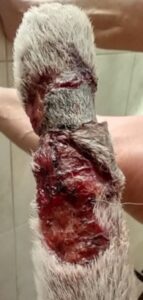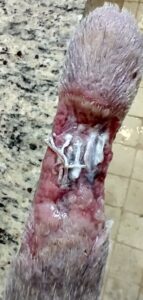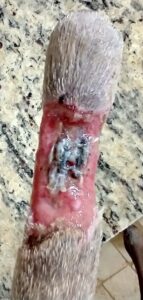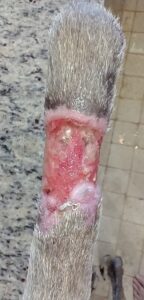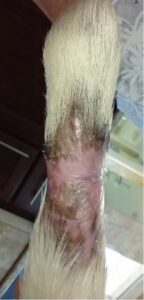Four year old Great Dane female developed happy tail on Dec. 4th. The owner sought to protect and treat the wound with standard of care, but the tail did not heal. On January 25’th, part of the tail was amputated and the dog was prescribed antibiotics (Cefpodoxime (Simplicef) 200 mg – 2 per day). The first bandage change was on January 28th and the tail was extremely red and sore. On re-dressing Feb. 2nd, the wound had worsened. The wound continued to worsen with the stitches rupturing and the tail bone becoming visible at the tip of the tail. There were also black, necrotic areas along the tail itself and some areas were oozing. A second course of antibiotics was prescribed (Cefpodoxime (Simplicef) 200 mg – 2 per day).
On February 14th, SertaSil treatment was started and the use of antibiotics stopped. At this stage, the bone was clearly exposed at the tip of the tail. Along the tail, dressings had led to severe necrosis encircling the entire tail and had left bones, tendons, vessels and nerves exposed and damaged. MPPT was applied daily following thorough washing with tap-water. Healing proceeded without complications and full closure was achieved after 48 days. Follow-up 3 months after closure, confirmed that the wound had remained closed and that tissue remodeling was ongoing.














